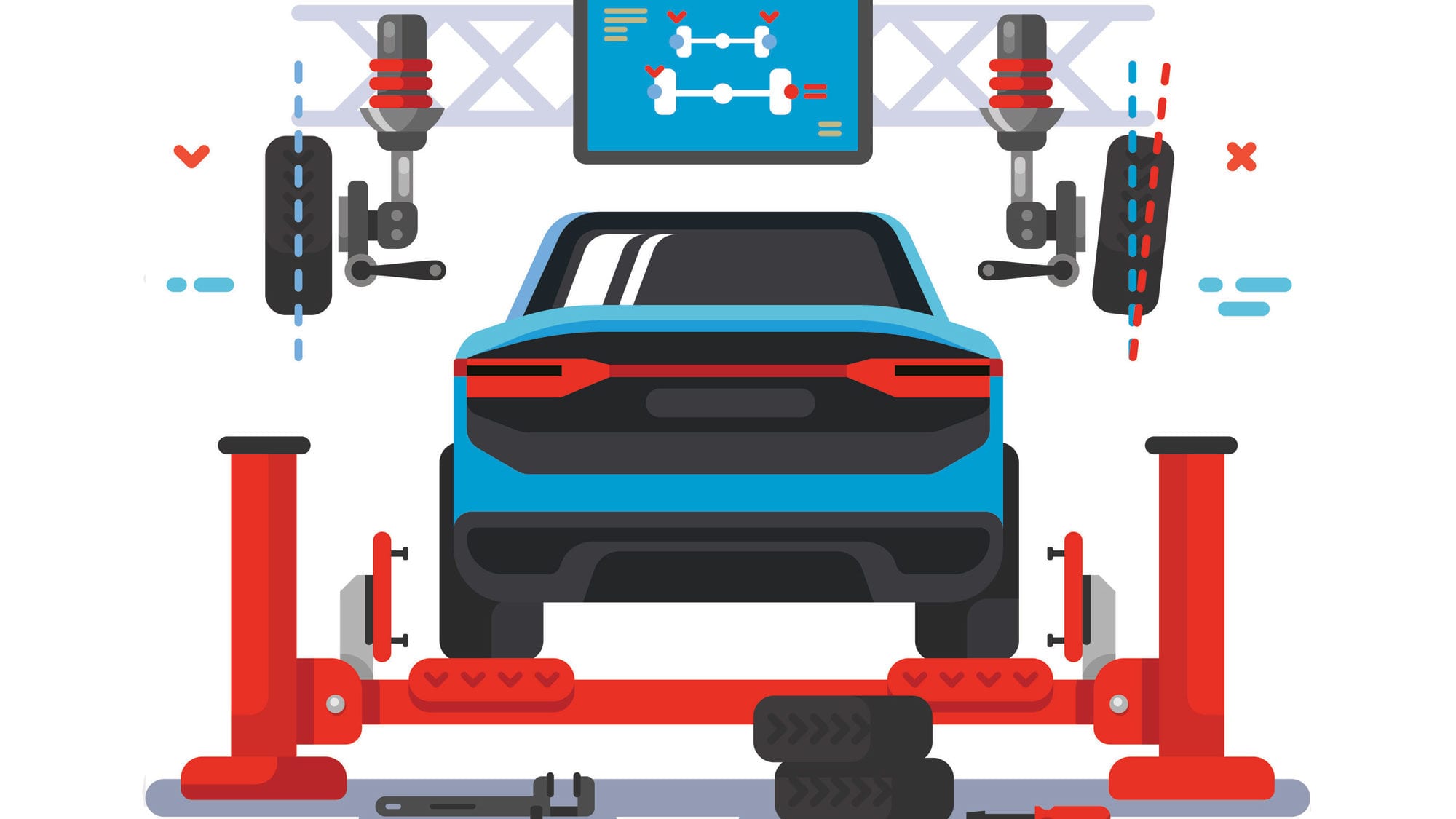It’s a vehicle owner’s worst nightmare: a repetitive clicking, whining or clunking when you drive. You may not know what it means, but you do know to get it inspected by a pro. “Always go in with a detailed explanation about what the sound is and when it’s happening,” says Randy Loyk, AMA’s manager of automotive services. “That way, the mechanic knows what to listen for.” Here, Loyk breaks down some of the car noises that could be giving you a headache.
DRONING
Packed in grease, wheel bearings reduce friction so your wheels can spin without generating excessive heat. They typically last at least 100,000 km, but can fail earlier if you often drive aggressively or carry heavy loads. When that happens, you’ll hear a constant droning that changes pitch depending on your speed. Once damaged, modern sealed bearings must be replaced; they can’t be repaired.
KNOCKING OR CLUNKING
As part of a vehicle’s suspension, the strut assembly incorporates shock absorbers and springs to provide a smoother ride. When a strut starts to wear down or leak, ride quality deteriorates and you may hear a knocking or clunking when you drive over bumps. That’s the strut “bottoming out.” Struts are integrated with the suspension system, so replacing them requires specialized tools and can be labour intensive.
MORE TO READ
Why it’s important to get your lug nuts checked after a tire change
CLICKING
In front-wheel drive vehicles, constant velocity (CV) joints connect the drive shaft to the transmission and wheels. CV joints are fairly hardy, but if the protective boot that they’re encased in cracks or tears, then moisture or debris from the road can penetrate and corrode the joint. If you hear clicking when you make a hard turn or acceleration, then that could suggest a problem.
SQUEAKING OR RATTLING
Washer-like bushings control the amount of movement between parts and help absorb road vibrations. Over time they can break down; the resulting metal-on-metal con- tact causes squeaking, clunking or rattling sounds, particularly when you’re cornering or if you drive over a bump. Bushings are inexpensive to replace, but their failure may indicate that the part they’re attached to is nearing the end of its lifespan.
MORE TO READ
When to repair an older car (and when not to)
SQUEALING
Your vehicle’s rubber serpentine belt snakes around multiple pulleys to power many components—from the alternator to the A/C compressor. It should last 100,000 km or more, but eventually may crack, or pieces of the inside rib might peel off. Squealing can mean your belt is losing tension and starting to slip. Get it inspected: If the belt breaks, your car will stop working and the engine may incur damage.
WE’VE GOT YOU COVERED
Work done at AMA Approved Auto Repair Services facilities is backed by a one-year, 20,000-km warranty on most parts and services. Click here for more information.
